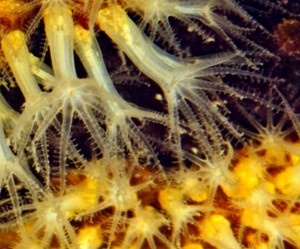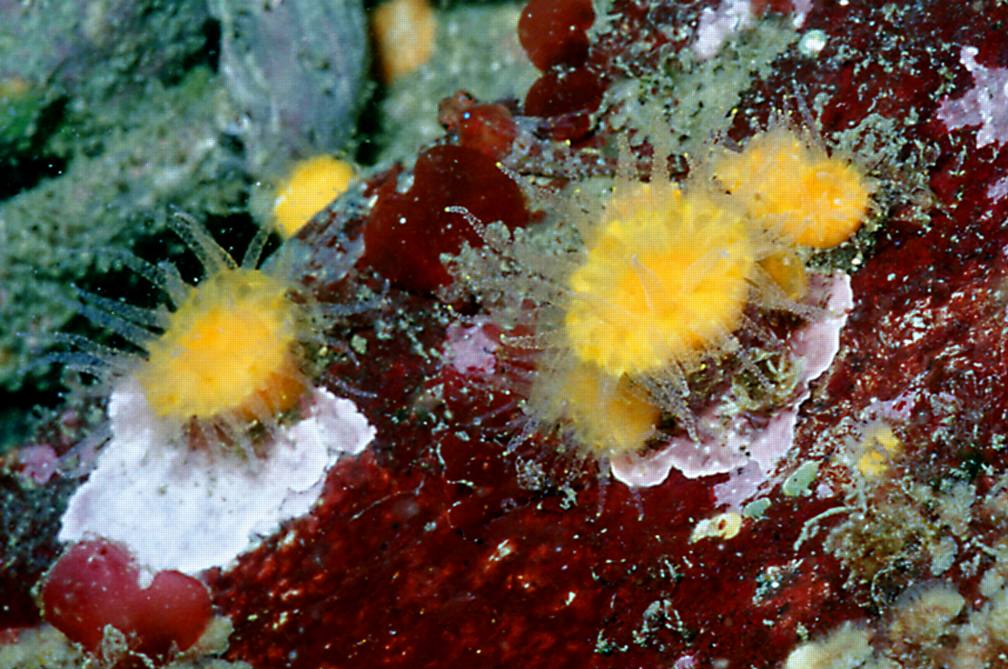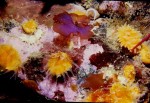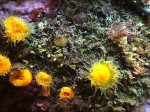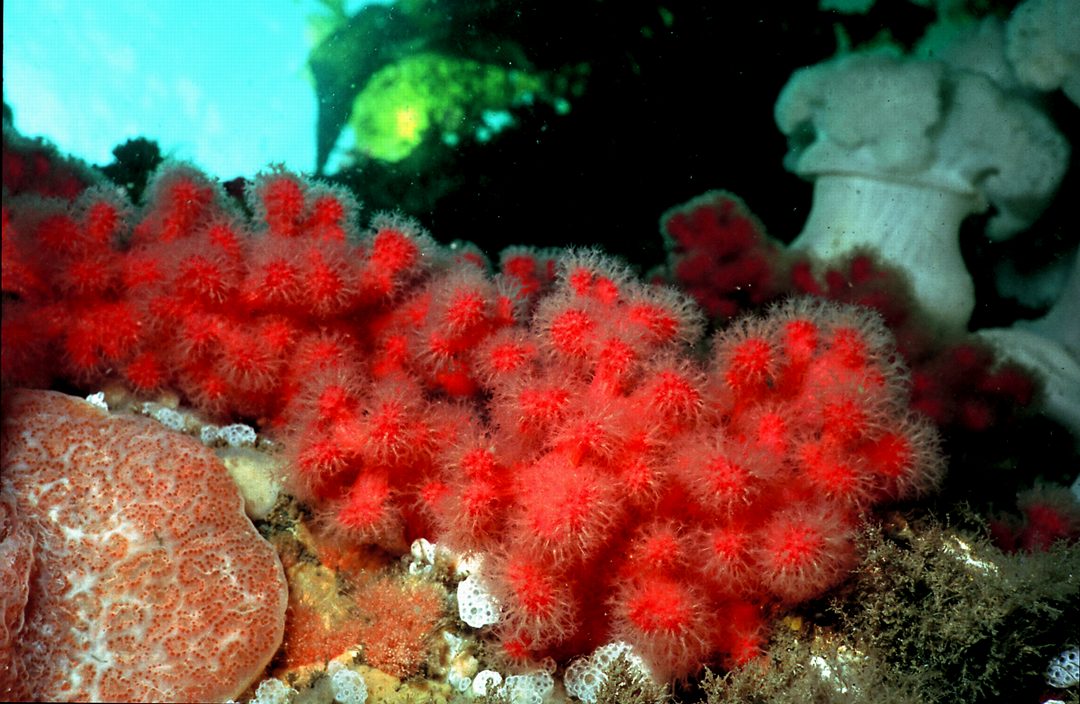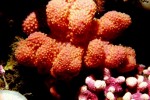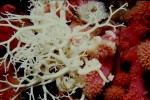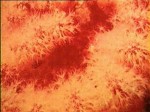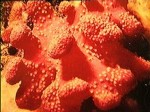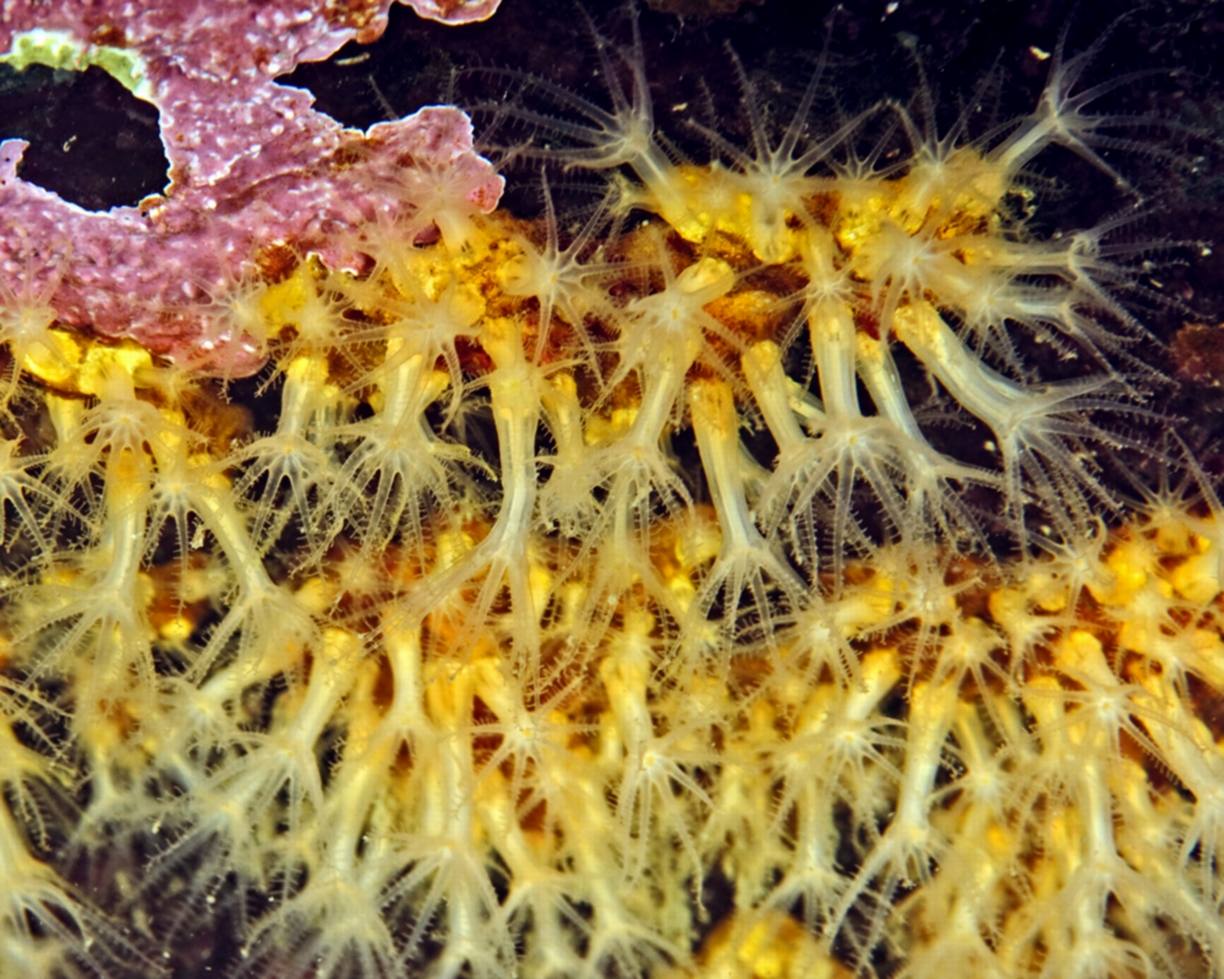
A colony of Clavularia sp. by Ryan Murphy, April 2010. The individual polyps can be seen in unusual clarity.
See Ryan’s underwater set on Flickr with a range of invertebrates:
This species is currently being identified. Each polyp is smaller than 1.2cm. Although it may appear at first as a hydroid, it is actually a soft coral, in known as an octocoral because of the eight tentacles. It is found in small patches a few cm. in diameter on the rocks right off the docks at Race Rocks in 10-12 metres of water.
Dr. Anita Brinckmann Voss identified this sample and indicated that it is related to Gersemia the soft pink coral. She has seen it in samples from Race Rocks before but not in such a large colony. She also indicated that a new species has been described from the North Pacific and she will try to get us a reference to it.
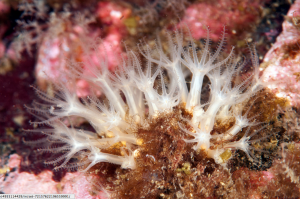
Another photo by Ryan Murphy of a Clavaria colony. The colour difference here is unexplained so far.
| Domain | Eukarya |
| Kingdom | Animalia |
| Phylum | Cnidaria |
| Class | Anthozoa |
| Subclass | Octocorallia |
| Order | Alcyonacea |
| Family | Clavulariidae |
| Genus | Clavularia |
| Species | sp . |
| Common Name: | Pale soft coral |
Octocorals on Coral reefs make up a large portion of the species there. The potential medicinal uses of several species of clavularia have been published. The abstract of one such study on Clavularia viridis is shown below:
Lin YS, Khalil AT, Chiou SH, Kuo YC, Cheng YB, Liaw CC, Shen YC. of the Department of Marine Biotechnology and Resources, National Sun Yat-Sen University, Kaohsiung 804, Taiwan, Republic of China.
Abstract
Chemical investigation of the nonpolar extract of soft coral Clavularia viridis resulted in isolation of five new prostanoids, designated as claviridic acids A-E (1-5, resp.), in addition to the known clavulones I-III. Their structures were determined on the basis of spectroscopic techniques, especially HR-ESI-MS, CD, and 2D-NMR experiments. The isolated marine prostanoids exhibited potent inhibitory effect on PHA-induced proliferation of peripheral blood mononuclear cells (PBMC), as well as significant cytotoxic activity against human gastric cancer cells (AGS)
| This file is provided as part of a collaborative effort by the students, faculty, staff and volunteers of Lester B. Pearson College |
April 2010
Garry Fletcher |

